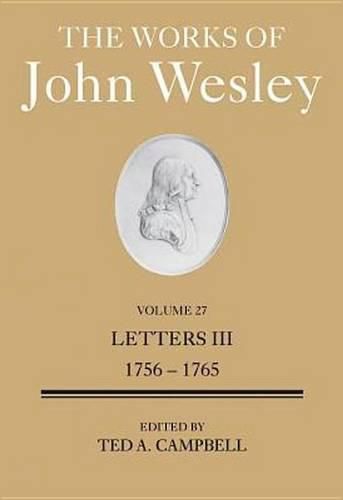Readings Newsletter
Become a Readings Member to make your shopping experience even easier.
Sign in or sign up for free!
You’re not far away from qualifying for FREE standard shipping within Australia
You’ve qualified for FREE standard shipping within Australia
The cart is loading…






This title is printed to order. This book may have been self-published. If so, we cannot guarantee the quality of the content. In the main most books will have gone through the editing process however some may not. We therefore suggest that you be aware of this before ordering this book. If in doubt check either the author or publisher’s details as we are unable to accept any returns unless they are faulty. Please contact us if you have any questions.
Although many of the letters of John Wesley are of value as literature-especially as crisp statements of his views or desires with little attempt at embellishment-their major importance is as a revelation of him as a man and of the people and events of his day, especially those linked with the Methodist movement. They furnish us, in fact, with a portrait through 70 years that is both more revealing in detail and fuller in coverage than any other source. The correspondence presented illuminates critical developments in the Wesleyan movement in the period between 1756 and 1765, including very significant rifts between John Wesley and his brother Charles and between John Wesley and his wife Mary, Wesley’s attempts to deal with radical enthusiasts and separatists (such as Thomas Maxfield) within the Methodist movement, his relationship to Greek Orthodox leader Gerasimos (Erasmus) Avlonites, and Wesley’s activities related to the Seven Years War.
$9.00 standard shipping within Australia
FREE standard shipping within Australia for orders over $100.00
Express & International shipping calculated at checkout
This title is printed to order. This book may have been self-published. If so, we cannot guarantee the quality of the content. In the main most books will have gone through the editing process however some may not. We therefore suggest that you be aware of this before ordering this book. If in doubt check either the author or publisher’s details as we are unable to accept any returns unless they are faulty. Please contact us if you have any questions.
Although many of the letters of John Wesley are of value as literature-especially as crisp statements of his views or desires with little attempt at embellishment-their major importance is as a revelation of him as a man and of the people and events of his day, especially those linked with the Methodist movement. They furnish us, in fact, with a portrait through 70 years that is both more revealing in detail and fuller in coverage than any other source. The correspondence presented illuminates critical developments in the Wesleyan movement in the period between 1756 and 1765, including very significant rifts between John Wesley and his brother Charles and between John Wesley and his wife Mary, Wesley’s attempts to deal with radical enthusiasts and separatists (such as Thomas Maxfield) within the Methodist movement, his relationship to Greek Orthodox leader Gerasimos (Erasmus) Avlonites, and Wesley’s activities related to the Seven Years War.